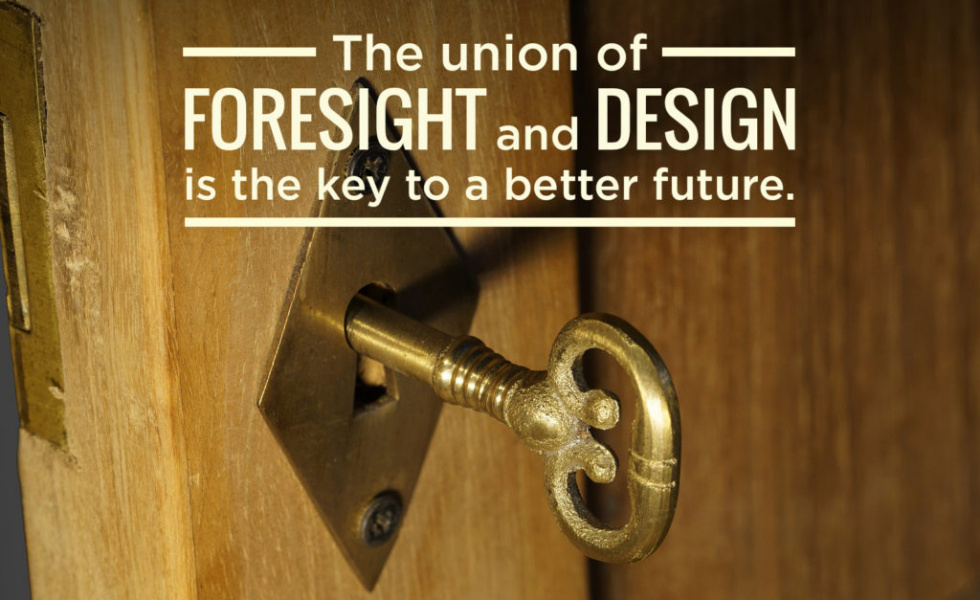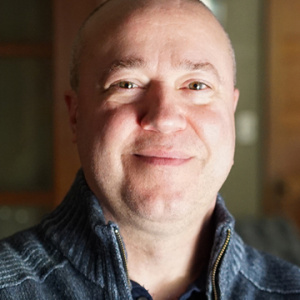Designing Our Future — Futuring Our Design

Recently I’ve been asking myself, “Why don’t we see more design-oriented firms incorporating and utilizing the power of futures thinking and foresight?”
And I’m definitely not alone in this line of thinking, because something really exciting has been emerging in various design disciplines, companies and educational institutions across the globe.
In growing numbers, designers are realizing that it isn’t sufficient to only create things that are beautiful or maximize productivity, but that design must also understand deep patterns and trends, be a champion for aspirational futures to clients and society at-large and see itself as a leader in how our collective future will unfold. This is really great news, because “design+futures” is a “missing link” of sorts in overcoming the wicked problems and grand challenges that we face today, as well as those that are just over the horizon.
I spoke with Cecily Sommers, the Director of Futures Studies at the Chicago-based firm Bluedog Design. As founder and president of The PUSH Institute, Cecily is an awesome professional futurist who helps clients to create brand-specific, future-focused innovation portfolios. When I asked Cecily to share her well-informed ideas about futures thinking and design being a perfect mix, and why Bluedog is committed to Strategic Foresight, this is what she said:
“Simply put: Design Thinking = Systems Thinking = Futures Thinking. They really describe the same function and discipline, though they take on different labels in different domains.
My work with Bluedog is all about deconstructing the (future) issues to find the purest solution for the (client’s) brand. Then we reconstruct the future with that previously unseen opportunity integrated throughout, and (distill it) into a plan that’s immediately actionable. That’s the role I play and support. Once the big idea is defined, designers engineer the specific deliverables – though, of course, they’re partners in the process the whole way.”
This idea of “Futures Thinking” and “Design Thinking” being the same function is being recognized by designers from all disciplines, and it’s one of the reasons that the futures and foresight field is now forging a strong partnership with all facets of design.
Because the recent popularity of Design Thinking has helped to amplify the role of purposeful design in preferred social and technological futures, many savvy design firms are now digging deeper to position design as a means to creating new paradigms of adaptive, resilient and transformational thought and action.
Media expert and futurist Venessa Miemis emphasises this link in her article, “How Can Futures Thinking Amplify Design Thinking”:
“Coming up with innovative solutions to complex problems is as much of an art as a science. This is the stage of the process where design thinking and futures thinking overlap, with practitioners from both fields engaging in brainstorming, visioning, and concept mapping to help construct and arrange ideas in new ways. While futurists use a variety of tools and techniques for creative thinking, at the core of futures thinking is the notion that there is no one determined future. We explore alternative futures through scenario development, and then design for the most preferable future now.
…
As designers and architects of the future, we have an opportunity to play a powerful role in constructing reality and improving humanity’s experience on this planet. If the focus is only on a short term profit margin or a fad or a shiny new object, it will be an opportunity lost. Design can be reactionary, responding only to current conditions, or it can be visionary, by presenting solutions to problems yet undefined. We are at a pivotal point in human history, where “how things work” is being redefined across the board. By acknowledging this, focusing, and setting clear intentions, we have the potential to explode into a 21st Century Renaissance. I am curious to see what will happen when artists and designers choose to step up to the plate and lead us towards a future characterized by innovation, functionality, and aesthetics.”
As this “renaissance” of design+futures is beginning to manifest, it is producing some exciting results.
The NYC-based futures and strategy think tank Wevolve presented a lecture at the School of Visual Arts MFA Interaction Design entitled “Creating Radically Better Futures.” In the lecture, futures specialist Ville Tikka notes:
“Massive and thrilling challenges are ahead of us in our post-crunch/pre-turbulence world where change is constantly speeding up. Anticipating the change and responding to it with radically better propositions has become a critical capacity for every aspect of design, ranging from industrial and service design to urban planning and brand strategy.
This is the business landscape where new principles and methods are needed that allow us to envision alternative futures, change the rules of existing games and create more sustainable, meaningful, and empowering solutions for the big and small problems in the north and south.
It often means broadening our scope and starting the design process from truly understanding the big picture and socio-cultural shifts to rethink the world we live in and create a better one.“
Since design education is often at the heart of creating those better futures, it’s not surprising that a great institution like the Ontario College of Art and Design has recognized the larger role of design in formulating present actions with the future in mind, establishing a new MDes in Strategic Foresight and Innovation that is flourishing.
They have reinforced the connection between design and futures thinking:
“Through holistic thinking in a co-creative environment, the designer, the business person, the social scientist and the engineer will develop together the skills required for true socio-technological innovation.“
So you can begin to understand my excitement over the marriage between design and futures/foresight. That union creates a lab through which deep foresight, aspirational futures and transformational alternatives take form, helping today’s leaders and change agents employ powerful, meaningful and intentional design.

Frank Spencer
Co-Founder
Creative Director
In 2009, Frank founded Kedge – a global foresight, innovation, and strategic design firm which pioneered TFSX. Throughout his career, Frank has worked as a leadership coach and developer with entrepreneurs, social communities, networking initiatives, and SMEs, helping them in areas such as development, innovation, and networking.
Read More
